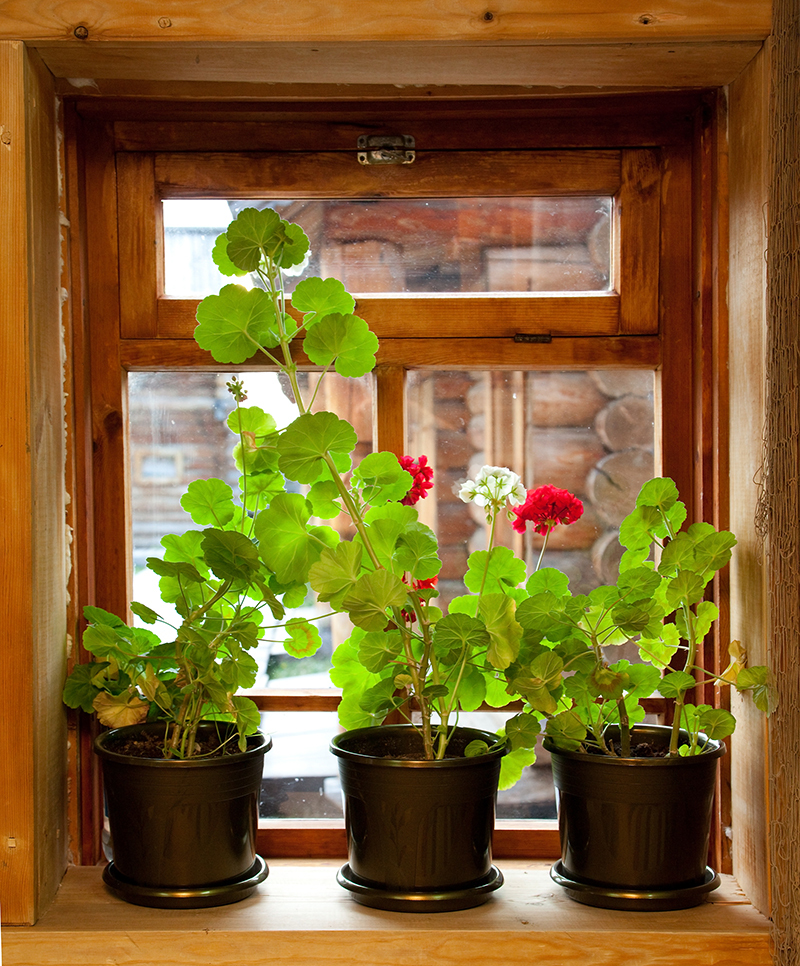Lifelong Beauty: How to Tend to Your Cut Flowers
Posted on 29/08/2025
Lifelong Beauty: How to Tend to Your Cut Flowers
There's nothing quite like the joy and charm of freshly cut flowers. Whether you've received a bouquet, picked blooms from your own garden, or selected stems from a local florist, you want that beauty to last as long as possible. But keeping cut flowers vibrant isn't just about placing them in water and hoping for the best. In this comprehensive guide, we'll explore expert techniques and time-tested tips to prolong the life of your cut flowers--ensuring days or even weeks of enduring beauty.
Why Do Cut Flowers Fade?
Understanding why cut flowers wilt and fade is the first step in learning how to preserve their beauty. Once separated from their roots, flowers lose their direct water and nutrient source. The stems, deprived of their support system, are vulnerable to air bubbles (embolisms), bacteria, and dehydration--all accelerating the decline of your cherished arrangement.
- Lack of water: Without regular water intake, cut flowers quickly become dehydrated.
- Microbial growth: Bacteria in vase water can rapidly block stems and shorten bloom life.
- Temperature fluctuations: Heat speeds up the respiration and decay of delicate petals and foliage.
- Ethylene gas: Some flowers release or are sensitive to this gas, which hastens aging.
Fortunately, you can control many of these factors with a few simple techniques and careful attention.

Preparing Your Cut Flowers: The First 24 Hours
What you do in those crucial early hours can spell the difference between fleeting and lasting floral beauty. Follow these essential steps:
1. Clean Your Vase Thoroughly
Bacteria is the main culprit behind premature wilting. Before arranging new flowers, wash your vase with hot, soapy water and rinse thoroughly. For extra sterilization, use a dilute bleach solution.
2. Cut Stems at an Angle
Always use sharp, clean shears to trim 1 to 2 inches off the stems at a 45-degree angle. This increases surface area for water uptake and prevents stems from sitting flat at the bottom, where they can be blocked.
3. Remove Lower Leaves
Any leaves submerged in water invite bacterial growth. Strip all foliage below the waterline for a cleaner, healthier vase environment.
4. Hydrate Immediately
Bring freshly cut flowers directly to water as soon as possible. If you can't arrange them right away, store the stems in water in a cool, shaded place.
5. Use Flower Food
Most florists include a packet of flower food with purchased bouquets. These contain sugar for energy, acidifiers to lower pH, and a biocide to fend off bacteria. Always dissolve flower food fully in the vase water.
Daily Care for Vibrant, Long-Lasting Arrangements
Tending to your cut flowers daily is key to ensuring their ongoing vitality. Consider these essential practices:
Change Water Regularly
Freshen the vase water every 1-2 days to prevent bacterial growth. Each time you change the water, rinse the stems and re-trim them slightly if possible.
Keep Flowers Cool
Display your cut flowers away from direct sunlight, heat vents, and appliances that emit heat. Cooler temperatures slow down respiration and aging processes.
Avoid Ethylene Gas Exposure
Keep arrangements away from ripening fruit and vegetables, which emit ethylene and can cause blooms to age faster. Some flowers are especially sensitive--roses, tulips, and carnations among them.
Re-cut Stems Every Few Days
Bacteria can build up and block the cut ends, slowing water flow. Snip off 1/2 to 1 inch from each stem every 2-3 days to revitalize uptake.
Remove Wilting Flowers Immediately
If a bloom wilts or begins to decay, it can cause neighboring flowers to wilt more quickly. Remove spent flowers promptly to keep your arrangement looking fresh and lively.
Special Tips by Flower Type
Some flowers require extra-special care. Here are a few expert tips for common varieties to maximize their lifespan and beauty:
-
Roses:
- Remove any guard petals (outermost layers) for a cleaner look.
- If roses droop, re-cut stems and immerse the whole flower in a basin of lukewarm water for 30 minutes to revive.
-
Tulips:
- Tulips continue to grow after being cut. Trim stems regularly and use tall vases for support.
-
Hydrangeas:
- Prone to wilting--cut stems vertically one inch, then dip in boiling water for a few seconds before arranging.
- Misting blooms can help maintain firmness.
-
Daffodils and Narcissus:
- Release sap that can harm other flowers. Display separately for the first 12-24 hours in water before combining with other species.
-
Sunflowers:
- These sturdy blooms love water. Make sure to replenish water levels daily.
Homemade Flower Food Recipes
If you don't have commercial flower food, you can make your own. These easy flower food recipes will help maintain the vitality of your cut flowers:
-
Sugar + Vinegar:
- Mix two tablespoons of sugar (for energy) and two tablespoons of white vinegar (to lower pH and inhibit bacteria) into a quart of water.
-
Lemon-Lime Soda:
- Add 1/4 cup clear soda (not diet) and 2-3 drops of bleach to a quart of water. The soda offers sugars, and bleach keeps bacteria at bay.
-
Aspirin:
- Crush one aspirin tablet and dissolve it in the vase water. The salicylic acid acts as a preservative.
Note: Always use lukewarm water for most flowers. However, bulb flowers (like tulips or daffodils) fare better in cool water.
Creative Display Ideas to Celebrate Your Cut Flowers
Presentation is part of the experience! Here's how to get creative with your displays to maximize both visual pleasure and longevity:
The Rule of Odd Numbers
Arrangements typically look best with an odd number of stems. Group flowers in threes, fives, or sevens for a natural, balanced composition.
Varying Height and Texture
Mix flowers of different heights and forms. Experiment with lush peonies beside tall irises, or mix fluffy ranunculus with statuesque snapdragons for dramatic effect.
Small Bud Vases
Don't let short stems or broken blooms go to waste. Display singles or duos in small vases or bottles for delightful accents throughout your home.
How to Revive Wilting Cut Flowers
If your flowers begin to wilt ahead of schedule, try these emergency measures:
- Submerge Entire Stems: Place flowers (heads and all) in lukewarm water in a deep sink or tub for a few hours. This can rehydrate droopy blooms.
- Boiling Water Technique: For woody-stemmed blooms (lilacs, hydrangeas), dip stem ends in boiling water for 30 seconds, then return to fresh, cool water.
- Chill Them: Move arrangements to a refrigerator overnight to slow down aging processes and reinvigorate blooms.
Common Mistakes to Avoid with Cut Flowers
Even seasoned flower lovers can make mistakes. Steer clear of these pitfalls to enjoy the full lifespan of your arrangement:
- Neglecting to change water--the number one cause of bacterial buildup.
- Using dull scissors or knives that crush, rather than cut, stems.
- Forgetting to remove submerged leaves, leading to rapid decay.
- Placing flowers near fruit bowls, where ethylene can hasten aging.
- Exposing flowers to direct sunlight or drafts.
Eco-Friendly Flower Care and Disposal
Lifelong beauty is also about sustainability. Choose locally-grown flowers when possible for a smaller carbon footprint. Avoid chemical preservatives when not needed, and compost spent blooms rather than sending them to landfill.

Frequently Asked Questions (FAQs): Care for Cut Flowers
How long do cut flowers typically last?
Most fresh-cut flowers last between 5 to 14 days, depending on the variety and how well they're cared for. Some hardy types, like chrysanthemums, can last up to three weeks with proper attention.
Can I use tap water for my cut flowers?
Yes, but let it sit for a few hours before using if it's heavily chlorinated. Softened water, which contains high sodium, is best avoided.
Why should I cut stems under water?
Cutting stems under running water or in a bowl prevents air from entering the stems--ensuring maximum hydration and longevity.
Is flower food necessary?
While not strictly necessary, using flower food or a homemade alternative will significantly enhance the lifespan and vibrancy of your arrangement.
Which cut flowers last the longest?
- Chrysanthemums
- Carnations
- Alstroemeria
- Orchids
- Zinnias
Choosing these for your bouquets means lasting enjoyment!
Conclusion: Celebrate Lifelong Beauty with Every Bloom
Cut flowers bring brightness, fragrance, and elegance to every space. With the right care, you can extend their vitality and savor their beauty longer than ever. By incorporating these strategies--from cleaning and preparing stems to daily maintenance and creative display--you'll be rewarded with lasting, lush arrangements that uplift your home and spirit.
Enjoy your flowers to the fullest, and don't forget to share your stunning, long-lasting bouquets with others. After all, lifelong beauty is meant to be celebrated!
Latest Posts
Red Roses and Their Valentine's Day Mystique
Lifelong Beauty: How to Tend to Your Cut Flowers
8 Intriguing Facts About Sunflowers You Didn't Expect






